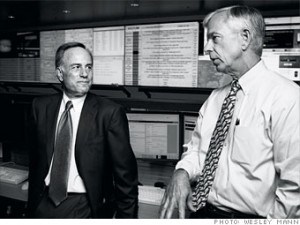 When people in Scranton and Wilkes-Barre noticed their neighbors in Philadelphia, Pittsburgh — even Allentown were getting super high-tech fiber upgrades from Verizon, they wondered why northeastern Pennsylvania has been bypassed, left to contend with Comcast as the only cable company in town.
When people in Scranton and Wilkes-Barre noticed their neighbors in Philadelphia, Pittsburgh — even Allentown were getting super high-tech fiber upgrades from Verizon, they wondered why northeastern Pennsylvania has been bypassed, left to contend with Comcast as the only cable company in town.
The Scranton Times-Tribune went to Verizon to find out why they snubbed the region.
Starting four years ago, Verizon made FiOS available in Philadelphia and surrounding counties, South Central Pennsylvania, Pittsburgh and even Allentown. Now the company wants to cultivate those market, said Verizon spokesman Lee Gierczynski.
“We are focusing on the commitments we have,” he said. “No plans have been outlined for future expansion.”
Smaller local phone carriers don’t have the money involved in providing their own Internet television. Instead, those such as Frontier Communications, re-sell satellite service.
“Offering out television service is expensive, too expensive for most smaller telephone companies,” said telecom industry analyst Jeff Kagan. “So many are reselling satellite service to keep customers who want one bundle and one bill.”
Because of that, satellite television providers, who were never a formidable challenge to conventional cable companies, gained market share, Mr. Kagan said.
Verizon ended their FiOS expansion partly because of ongoing negative reaction from Wall Street. Now with a change in CEO’s, things don’t look promising for upgrades anytime soon. It was former CEO Ivan Seidenberg that green-lit the idea of replacing old copper wire networks with new state-of-the-art fiber optics. Seidenberg got his start in the phone business as a cable splicer’s assistant, working with the copper wires and fiber-optic cables that are the backbone of today’s phone companies.
His successor, Lowell McAdam grew up in the wireless industry, which is increasingly responsible for Verizon’s revenue.
At a telecommunications crossroads, Seidenberg’s vision of fiber optic service replacing antiquated copper phone cables may be at risk from new leadership at the helm of Verizon — leadership that lives and breathes in a wireless world.
For phone companies, the choices are clear: suffer ongoing landline losses and hope wireless profits can cover the difference, sell off your landline customers to a third party that specializes in rural areas where wireless signal penetration is insufficient, or make required upgrades to stay competitive with cable companies that are also eroding your market share.
As far as the cable industry is concerned, they’d prefer Verizon just stay out of the video business altogether. Dr. John “Darth Vader” Malone, a former cable kingpin that owned Tele-Communications, Inc. (TCI), said there is room for only one player in the wired video business — cable companies.
 “I’ve never seen overbuilds work … it always ends up badly,” Malone has said repeatedly about cable competition.
“I’ve never seen overbuilds work … it always ends up badly,” Malone has said repeatedly about cable competition.
So for northeastern Pennsylvania, and millions of other Verizon customers hoping for something better, prepare for a long wait. Save for satellite services, your local cable company is likely to remain the only television service provider for the foreseeable future.


 Subscribe
Subscribe

Scranton owes their soul to the Comcast company store